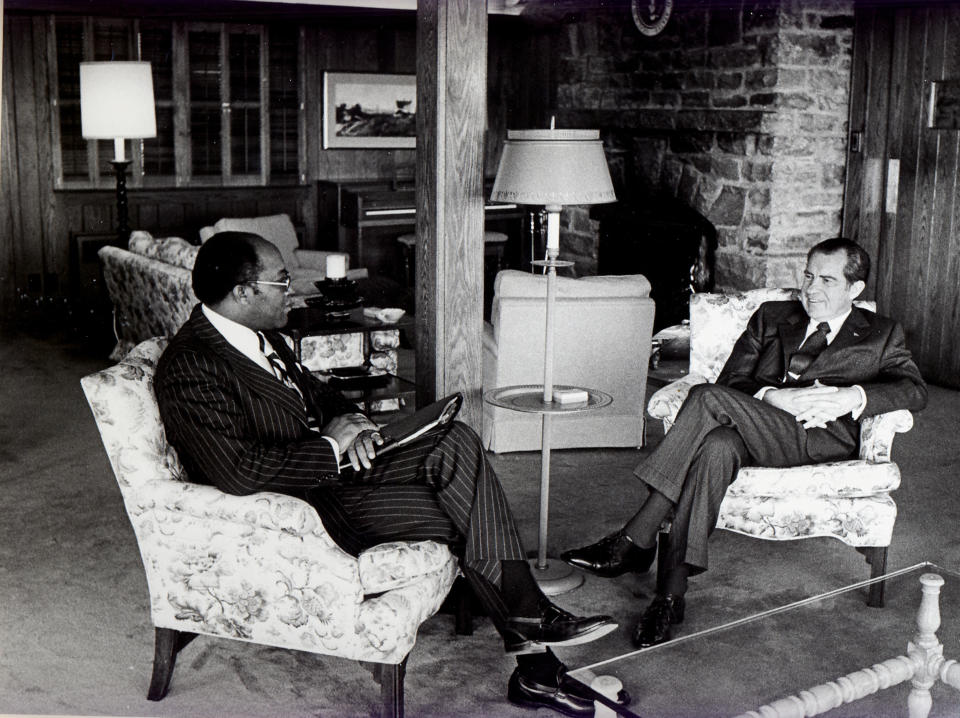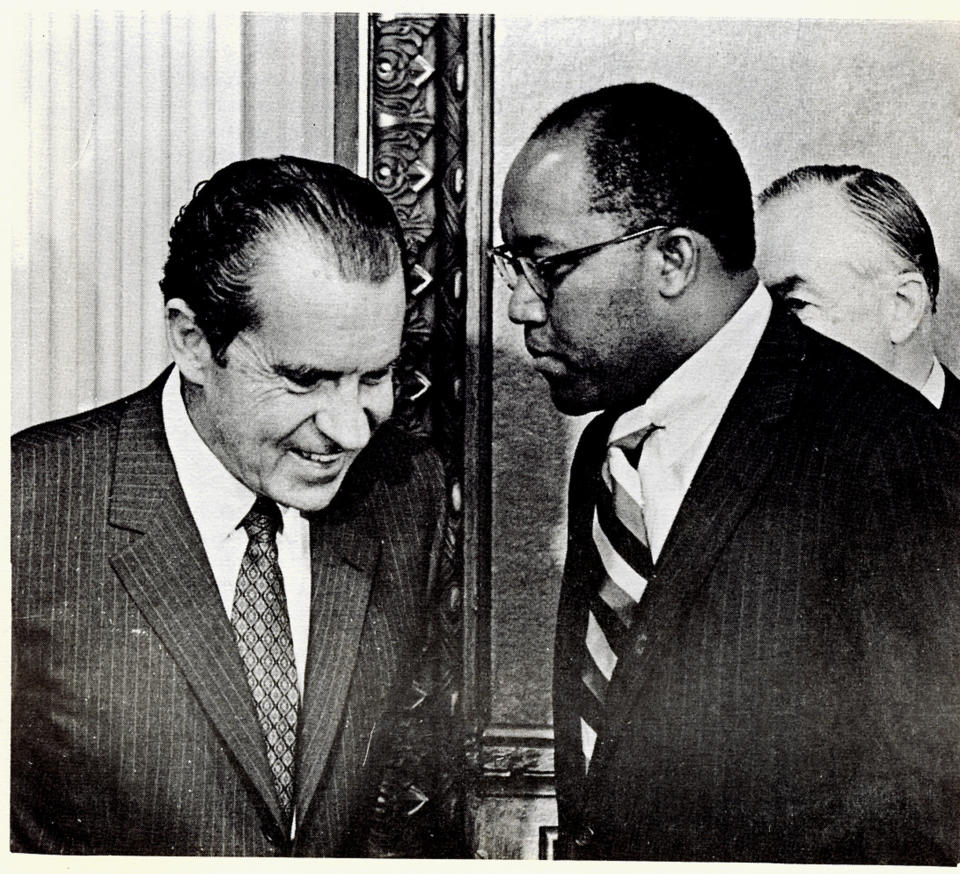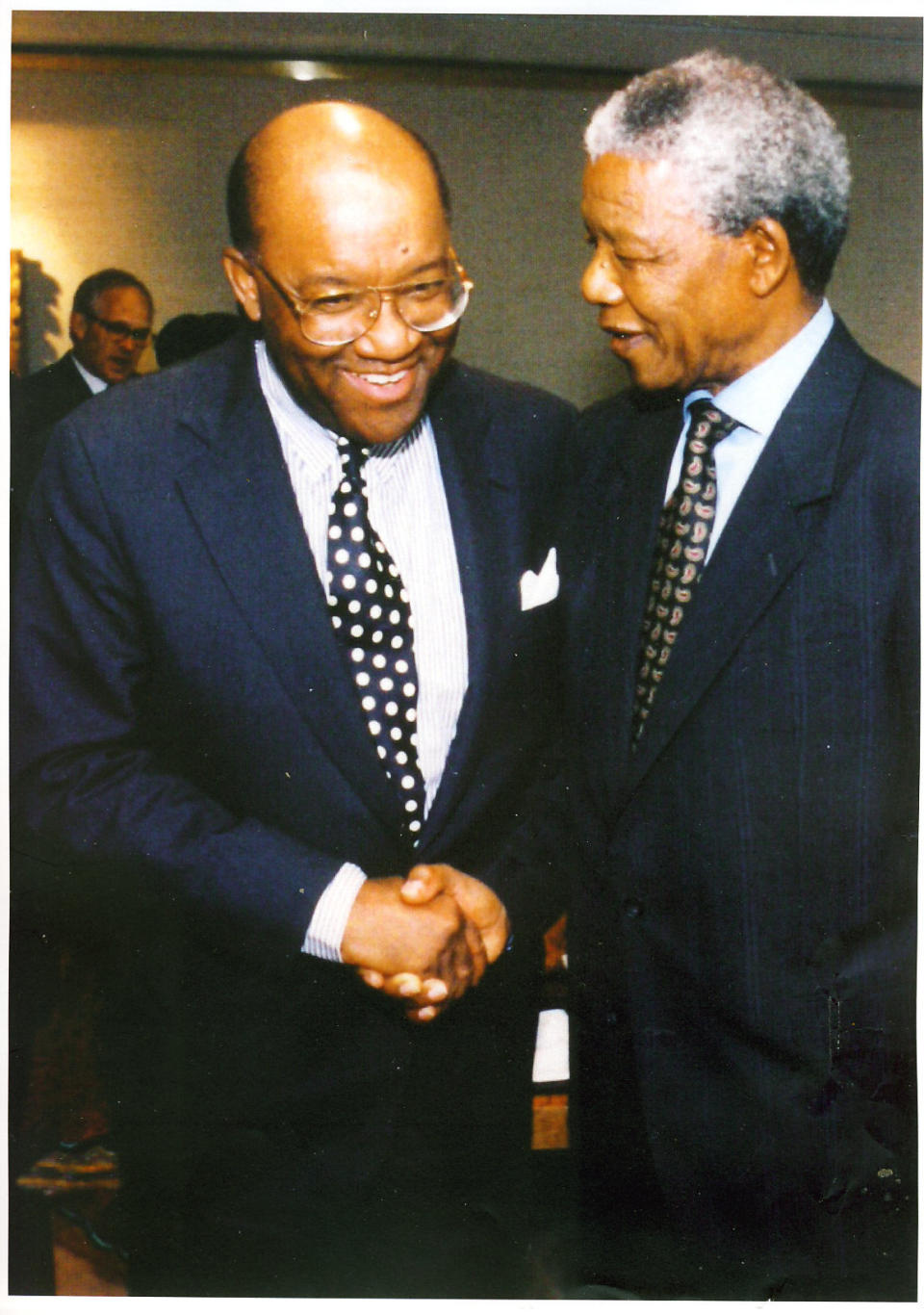Martin Luther King Jr.’s ‘secret weapon’ tells his story of civil rights in America
Robert Brown may not be a household name, but as a contemporary of 1960s icons like Martin Luther King, Jr. and Bobby Kennedy, he played a pivotal role by providing much-needed financial assistance to the civil rights movement.
Brown, 84, is CEO of B&C Associates, Inc., a global business management consulting firm he founded nearly 60 years ago in High Point, N.C. He works behind the scenes to help his clients – which include Fortune 500 companies and foreign governments – with crisis management and public relations.
“You can get it back but it's a hard thing to recoup a reputation. It's a very difficult thing,” Brown told Yahoo Finance (video above). “And most companies know that. That's why they try to get in front of things.”
While Brown’s work at B&C Associates is significant in itself, a glance around his office reveals that it’s the sum total of the historical events Brown was involved in, and his close relationships with Martin Luther King Jr., President Richard Nixon, Nelson Mandela and others – that really shaped his character and makes him so indispensable to his clients today.
“In our private conversations, the Reverend Martin Luther King Jr. often called me his secret weapon,” Brown writes in his new memoir, “You Can’t Go Wrong Doing Right.”

‘I start drinking out of the white water fountain’
Robert Brown has been slashed with a knife, assaulted, and jailed. He survived the Jim Crow South, the violence of the civil rights movement, and bombings and apartheid in South Africa.
Raised by his grandmother, the daughter of a former slave, in North Carolina, Brown lived through the Jim Crow South, where as a little boy old he could not drink from a Woolworth store water fountain reserved for whites.
“There was white water, and the colored water, and I start drinking out of the white water fountain. And my grandma said, ‘No Bobby! Don't do that!’ And I stopped drinking. I said, ‘Well momma, What's the difference between this white water and colored water?’ She said, ‘It is the same water, boy, but don't drink out of it right now.’ She said, ‘This is wrong. It's all God's water. It doesn't belong to us.’ So she was right,” he says.
Brown started his public relations company in 1960 on Washington Street, the same street where he used to shine shoes for 15-25 cents while his worst customers would spit on him or call him the N word.

‘In the right place at the right time’
He started to land major corporations as clients by advocating for smart business – acknowledging the purchasing power of black consumers and ending racist or discriminatory hiring practices in an era when the South was hanging on to its segregationist customs while places like New York were observing the fact that it was illegal.
Brown’s biggest client early on was Woolworth. He saw them through the protests against the whites-only lunch counters – and helped them deal with the challenges of being integrated in other parts of the country, but not in the South.
Today, the former Woolworth store location where the infamous whites-only lunch counter sit-in protests took place is a museum – the International Civil Rights Center & Museum in Greensboro, N.C.The lunch counters are positioned in the same way they were at time of the protests. There’s even a cherry pie for 15 cents sign hanging on the wall.
Brown played an important financial role in the civil rights movement. He says King, the first president of the Southern Christian Leadership Conference – which played an instrumental role in the movement – would come to him when SCLC’s coffers were low and payrolls needed to be met after he joined the board in 1962.
He says that he solicited donations from many of America’s top corporations to help pay for protests, bail money, travel expenses, lodging, and meals.
“I just happened to be in the right place at the right time,” says Brown. “I had a lot of contacts with a number of top companies. Many of these companies were having trouble in these various communities where they owned different kinds of operations. So they gave me a lot of flexibility in terms of finance and all that. I would tell them I needed so much money to be able to take care of different kinds of problems and so forth. If I told them I needed $10,000, or $25,000 or $50,000, I got that money. And I would do what I needed to do. I would feed people.”

‘The only place you can call up the head of Citigroup’
Although he was a registered Democrat, Brown joined President Richard Nixon’s administration in 1969.
He counted Dr. Martin Luther King, Jr., President John F. Kennedy, and Bobby Kennedy among the warriors of the civil rights era and was looking for a new opportunity after their assassinations.
As a special assistant to President Richard Nixon, he worked on financially empowering African-Americans.
While at the White House, he helped get federal grants for black businesses and helped African-American business owners get greater access to lucrative federal contracts. He says banks refused to give loans to black businesses at the time, and he tried to change that. Being at the White House made that fight easier.
“[The] White House [is] the only place you can call up the head of Citigroup, or the head of General Motors, and say, ‘Hey,’ ... You don't even have to call them up, just punch a button and say, “Tell the White House operator to get the chairman of General Motors on the phone for me.” And boom, he's on the phone,” Brown says. “That's what I used all those years I was there, to do whatever needed to be done. Whether it was for black colleges, black unemployment, black businesses, and others.”
‘The rage never leaves’
Brown’s business endeavors took him to South Africa where he was one of just a few to meet Nelson Mandela while he was in jail.

“Now he had been in jail for 23 years at that time... Only his immediate family would be able to see him and only then for 15 to 20 minutes at a time. They'd see him maybe two or three times a year, 15 or 20 minutes. I stayed with him that day for hour and a half. He told me everything it would take to make peace,” he says.
To this day Brown still feels anger over the racial injustices he experienced and witnessed growing up as a boy and as an adult.
“The rage never leaves here no matter how old you get,” he says. “You may not be able to do a lot of things that you used to do. I could run real fast. I still love to play golf, and I still love a lot of other things that I used to do. But when you see a lot of what's happening now, you don't particularly like that. You want people to come together. You want the country to run freely and good and you want our businesses to be booming all over the place.”
Follow Sibile Marcellus on Twitter @SibileTV.
More from Sibile:
How MLK’s favorite barber provided a safe haven for civil rights leaders
Meet Madam C.J. Walker, the first self-made African-American woman millionaire
Exclusive look at NY Fashion Week: It costs a fortune, but it’s ‘best bang for the buck’
Stock market highs mask economic inequality in US: Deutsche Bank
Follow Yahoo Finance on Twitter, Facebook, Instagram, Flipboard, LinkedIn, YouTube, andreddit.


